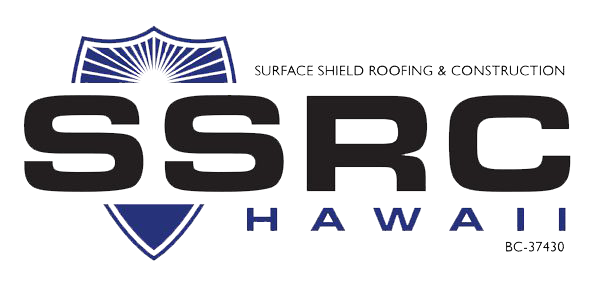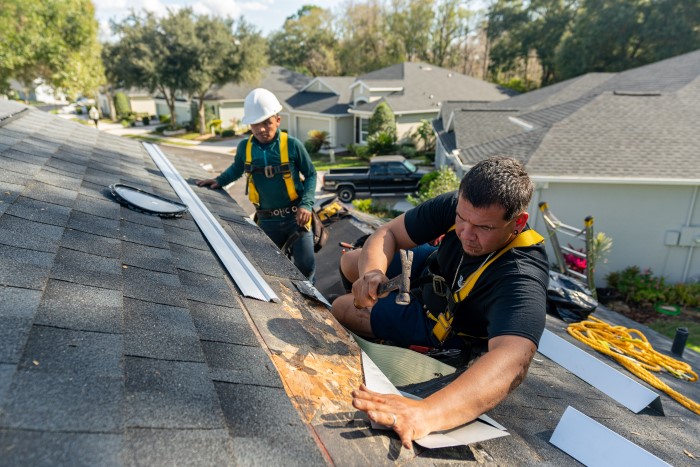Roof Repair Oahu: Expert Roof Repair Works for Lasting Protection
Roof Repair Oahu: Expert Roof Repair Works for Lasting Protection
Blog Article
Understanding the Different Types of Roofings: A Comprehensive Guide for Homeowners
In the realm of homeownership, picking the appropriate roofing style is a choice that lugs substantial ramifications for both capability and aesthetic appeal. With a range of choices-- ranging from the traditional gable to the modern flat-- each type presents distinct benefits and challenges that should align with the property owner's particular requirements and environmental factors to consider. Understanding these distinctions not just help in making an enlightened selection yet additionally affects long-lasting maintenance and energy efficiency. As we explore the ins and outs of numerous roofing system types, it becomes evident that dimension does not fit all; the best option may stun you.
Saddleback Roof
Gable roofings, characterized by their triangular form, are amongst one of the most prominent roofing styles as a result of their simplicity and effectiveness in losing water and snow. This design includes two sloping sides that satisfy at a ridge, allowing for reliable drain and decreasing the risk of water buildup. The high pitch frequently associated with gable roof coverings enhances their capability to take care of hefty precipitation, making them ideal for various climates.
In enhancement to their useful advantages, gable roofing systems use visual flexibility. They can be adjusted to various architectural designs, from typical to modern homes. The style can additionally fit added attributes such as dormer windows, which enhance all-natural light and ventilation in the attic area.
Additionally, saddleback roofs supply enough room for insulation, adding to power effectiveness. Home owners can select from a variety of roof materials, including asphalt tiles, steel, and floor tiles, further boosting personalization choices.
In spite of their advantages, gable roofings might require additional assistance in locations vulnerable to high winds or hefty snowfall. In general, the saddleback roof stays a preferred option because of its blend of performance, toughness, and aesthetic charm.
Flat Roofs
Flat roofings are commonly acknowledged for their minimalist design and practical applications, especially in industrial and industrial settings (oahu roofing). These roofs include a horizontal or nearly horizontal surface area, which permits easy construction and versatile room use. While they may lack the visual appeal of pitched roofings, level roof coverings use countless benefits, especially in urban settings where maximizing area is essential
Among the main benefits of level roofings is their ease of access. Homeowners can make use of the roofing space for various functions, such as roof gardens, balconies, or solar panel installments. Additionally, level roofing systems are generally extra economical to install and preserve contrasted to their sloped counterparts, as they require less materials and labor.
Common materials utilized for level roof coverings include built-up roofing (BUR), modified bitumen, and single-ply membrane layers, each offering distinct advantages. Overall, flat roofs serve as a practical and versatile option for numerous homeowners and companies alike.
Hip Roofing Systems
Hip roofing systems are defined by their sloped sides that converge at the top, forming a ridge. This design stands out from gable roofs, as all 4 sides of a hip roof covering slope downwards toward the wall surfaces, giving an extra steady structure. The angle of anchor the slopes can vary, enabling adaptability in architectural appearances and performance.
One of the main benefits of hip roof coverings is their capability to endure heavy winds and adverse climate condition. The sloped surfaces enable much better water drainage, minimizing the danger of leakages and water damages. Furthermore, hip roofings provide boosted attic room, which can be utilized for storage or perhaps exchanged habitable areas.
Nonetheless, creating a hip roof covering can be much more intricate and costly than easier roofing types, such as gable roof coverings. The extra material and labor associated with creating the slopes and ensuring appropriate architectural stability can result in greater expenses. Regardless of these drawbacks, lots of house owners prefer hip roofings for their resilience, visual appeal, and capacity for power efficiency.
Mansard Roofings
Mansard roofs, commonly identified by their distinct four-sided style, attribute 2 slopes on each side, with the lower incline being steeper than the upper. This building design, stemming from France in the 17th century, is not only aesthetically enticing yet practical, as it optimizes the useful space in the upper floorings of a structure. The steep lower slope permits even more headroom, making it an optimal selection for attic rooms or loft spaces, which can be transformed right into living rooms.
Mansard roof coverings are characterized by their adaptability, accommodating various architectural styles, from conventional to contemporary. They can be created with various products, consisting of asphalt tiles, slate, or steel, giving property owners with a series of choices to match their choices and budget plans. Furthermore, the design enables for the combination of dormer windows, enhancing all-natural light and air flow in the upper levels.
Nevertheless, it is important to take into consideration the prospective disadvantages. Mansard roofings might need more upkeep as a result of the intricacy of their layout, and their steep slopes can be testing for snow and rainfall overflow. Generally, mansard roof coverings integrate beauty with practicality, making them a popular selection among homeowners looking for distinctive architectural features.
Shed Roofs
As house owners increasingly look for simplicity and performance in their architectural layouts, dropped roofs have actually become a helpful resources preferred option. Characterized by a solitary sloping plane, a shed roof covering offers a minimal aesthetic that matches various home designs, from contemporary to rustic.
Among the main benefits of a shed roofing is its straightforward building and construction, which frequently converts to lower labor and material prices. This layout allows for effective water drain, lowering the risk of leaks and water damage. Additionally, the upright slope supplies enough room for skylights, enhancing all-natural light within the interior.
Shed roofing systems likewise offer adaptability in regards to use. They can be properly integrated right into additions, garages, or outdoor structures like sheds and structures. Furthermore, this roofing system style can suit various roofing materials, including metal, asphalt roof shingles, or even environment-friendly roof coverings, aligning with environment-friendly campaigns.
Nonetheless, it is necessary to take into consideration local environment problems, as heavy snow tons might require adjustments to the roof's angle or structure. Overall, dropped roof coverings offer a functional and visually pleasing choice for house owners wanting to make best use of functionality without endangering design.
Final Thought


Gable roofings, characterized by their triangular shape, are amongst the most popular roof designs due to their simplicity and performance in shedding water and snow. oahu roofing. The steep pitch generally associated with gable roofing systems boosts their capability to handle heavy precipitation, making them appropriate for numerous environments
While they may do not have the aesthetic charm of pitched roof coverings, flat roofing systems offer countless benefits, especially in urban atmospheres where taking full advantage of room is essential.

Report this page